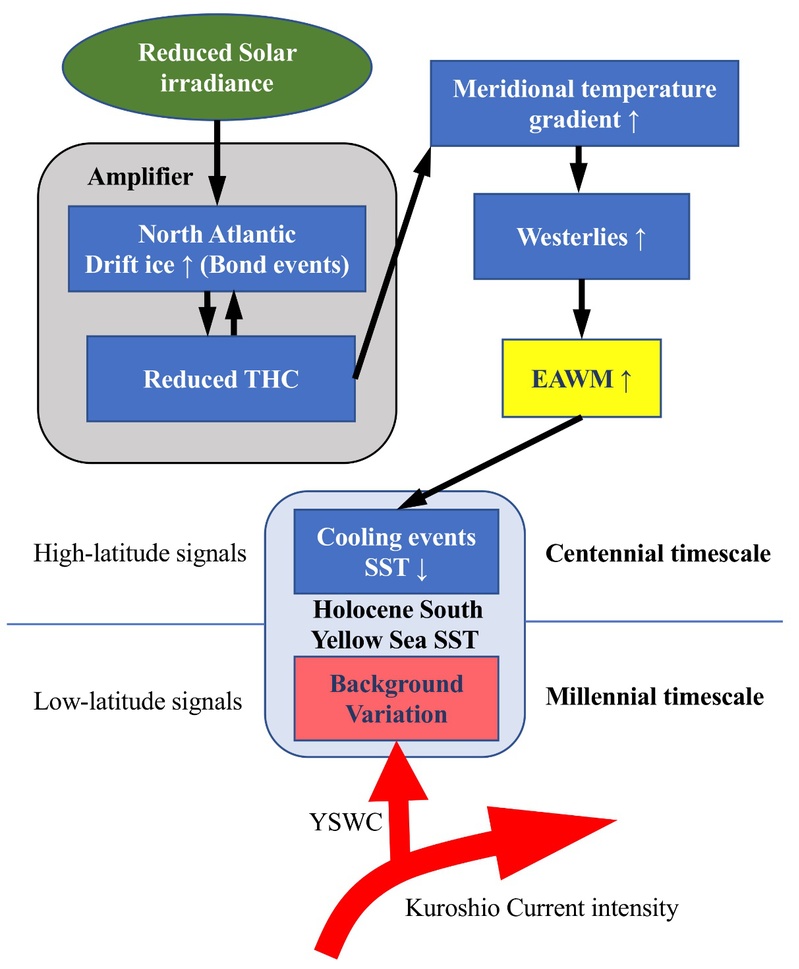With the support of projects like the National Natural Science Foundation of China, the research group of professor Zhao Meixun in the key laboratory of Marine Chemistry reconstructed the south Yellow See surface water temperature variations during the Holocene and revealed its evolution mechanism by the use of uk37 index.
In the modern times, the Yellow See surface water temperature is affected by both the high-latitude EAWM and low-latitude Kuroshio current at the same time. However, the evolution mechanism of the Yellow See surface water temperature still remains highly contentious. Dr.JIA Yonghao and others reconstructed the interdecadal surface water temperature records using two sedimentary cores located in the South Yellow See. By comparing the records of Kuroshio current, EAWM, North Atlantic Drift ice and things like that, there comes the idea that the Yellow See surface water temperature during the Holocene is affected by high-and-low latitude forcingon at the same time, and different forcingons exert chief influence on different timescales. The Yellow See water temperature in Millennial timescale is mainly under the influence of Kuroshio current, and in Centennial timescale, the EAWM. This is answer to the climate signals of North Atlantic Cold Event (Bondcycle).
The research results were published on the international mainstream periodical, Global and Planetary Change(GPC), JCR affectio 4.10 in 2018.
